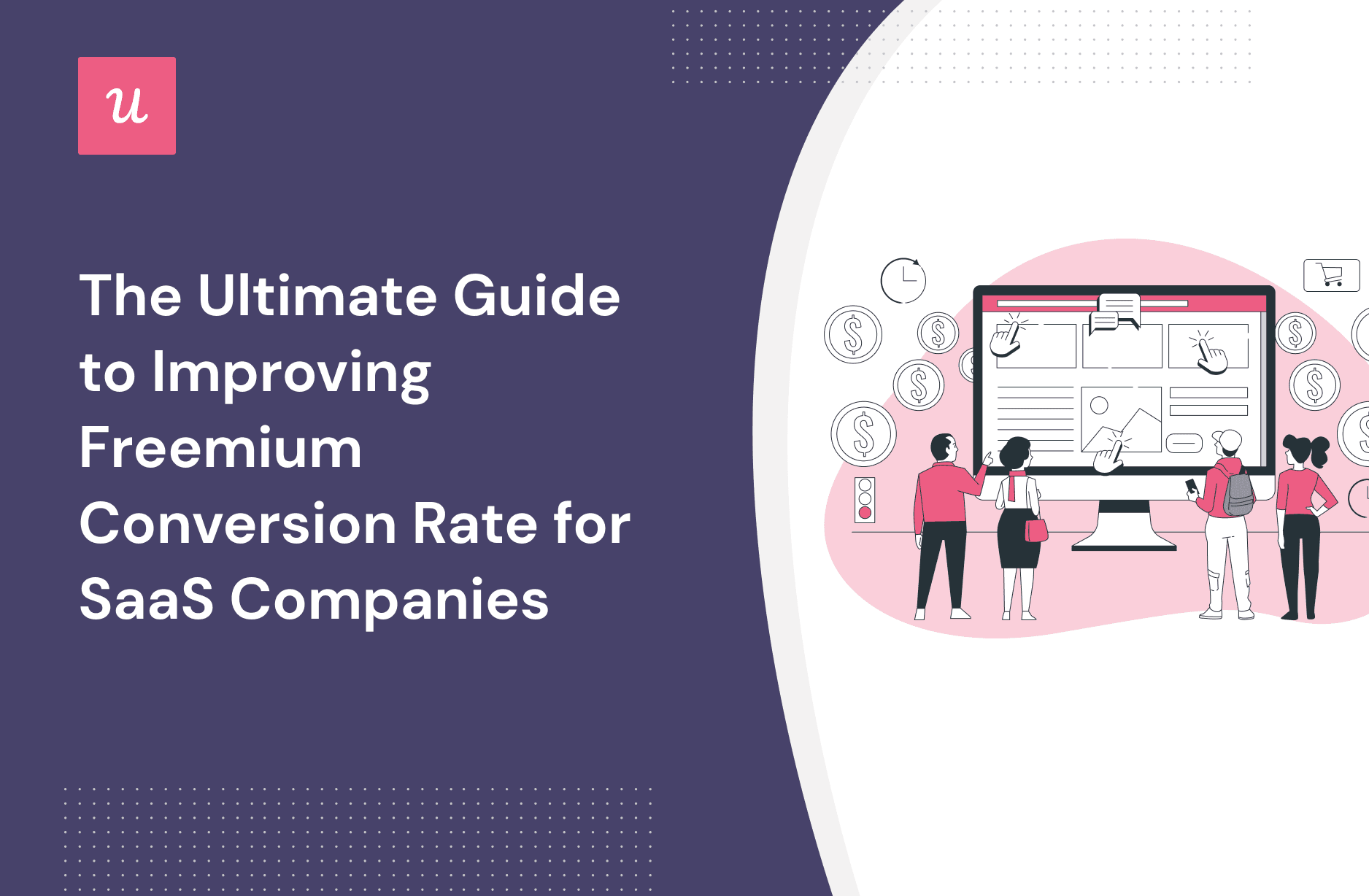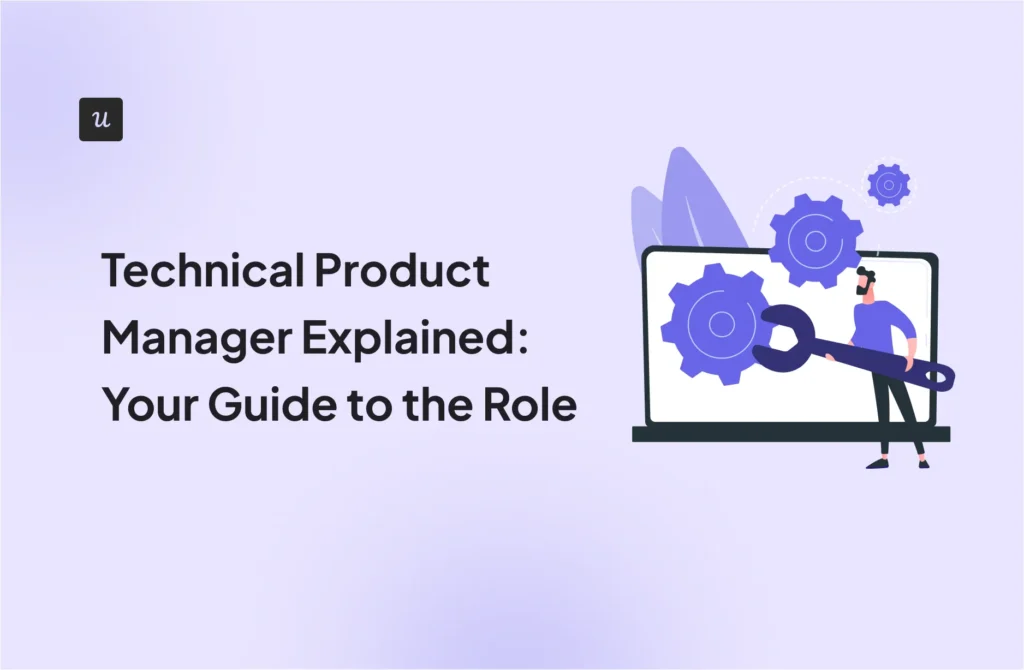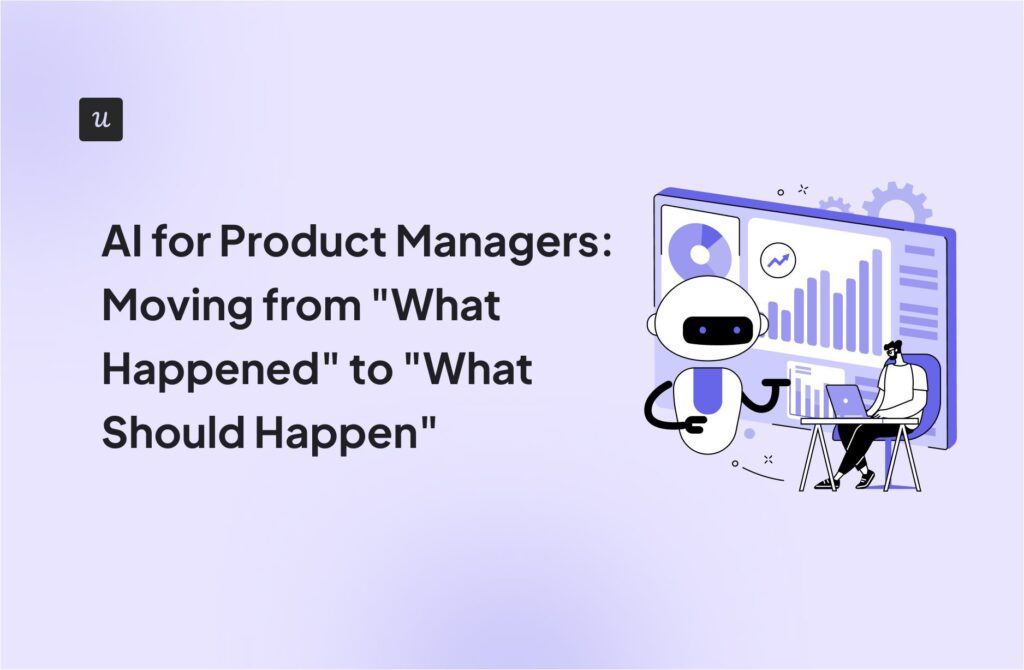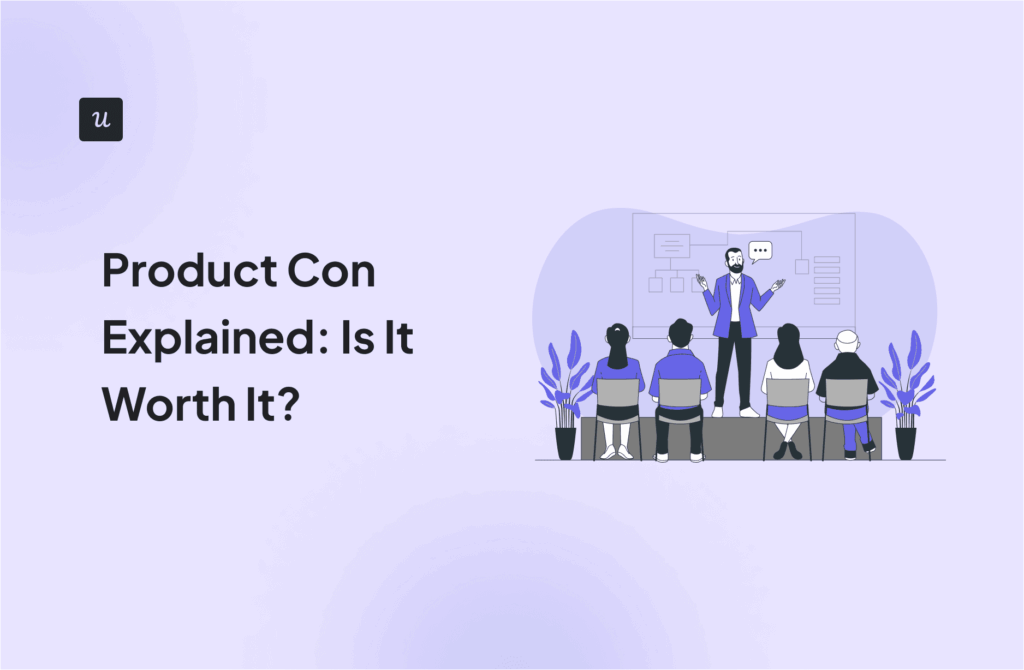
The Ultimate Guide to Improving Freemium Conversion Rate for SaaS Companies
How do you boost your freemium conversion rate and accelerate your SaaS growth?
That’s the key question that we tackle in our ultimate guide.
However, before we dive into different techniques you can use to drive conversions and analyze some successful examples, we look at the upsides and downsides of using the freemium model along with some useful benchmarks.
Try Userpilot Now
See Why 1,000+ Teams Choose Userpilot

Freemium conversion rate – quick summary
- Freemium is a customer acquisition strategy that gives users access to basic functionality without paying while hiding the more advanced features behind the paywall.
- With freemium, companies are able to increase their brand awareness and grow their customer base at a low cost. This allows them to collect usage data and customer feedback to improve the product.
- Freemium tends to be resource-heavy: it requires robust tech infrastructure and customer support. It’s also often exploited by users who have no intention to pay.
- The freemium pricing strategy is best suitable for early-stage companies still working on their product-market fit and products that are simple to use and satisfy simple user needs.
- A SaaS conversion rate normally ranges between 1% and 10%. For many companies, the ideal freemium conversion rate is around 2-5%. However, this depends on your product and sector.
- To boost your freemium conversion rate, you should use a mix of different techniques.
- Personalized onboarding experiences allow users to experience product value in the least possible time.
- Restricting the features available or setting usage limits in the free plan gives users an incentive to upgrade.
- To drive upsells, prompt your users with targeted in-app messages tailored to the needs of a particular segment.
- Use product usage data to trigger contextual prompts to upgrade.
- Tease your users and create FOMO by showing them glimpses of what the premium functionality can do for them.
- Free trials or reverse trials are one way of showcasing the premium features.
- Make the process of upgrading as frictionless as possible so that your users have little reason to change their minds.
- If your users are not converting, run in-app surveys to uncover the causes.
- Slack uses a range of techniques like contextual prompts to drive freemium conversions. Its strategy is working well as the company boasts a 30% conversion rate.
- Grammarly relies on FOMO as a conversion driver for its superb freemium tool.
- Zapier offers a range of free and paid plans to suit all users’ needs and puts limits on usage to motivate them to convert.
- Userpilot can help you increase your freemium conversion rate with in-app messages that target specific user segments and contextual prompts based on product usage data.
What is the freemium model?
The freemium model is a system in which you offer access to your product free of charge.
The freemium version normally doesn’t give access to full product functionality. Instead, it limits either the available features or imposes usage restrictions.
In this way, the free plan gives users a taste of what the product has to offer and incentivizes them to upgrade to a paid program.
Benefits of using the freemium model
Freemium models are an effective way to grow your brand awareness, which is essential for early-stage startups as it allows them to get a foothold in the market.
With greater awareness come lower customer acquisition costs and a larger customer base. This is reinforced by no/low entry costs or friction. It costs users nothing to start using the product, so why wouldn’t they?
This is particularly important in two situations.
First, it allows you to collect valuable user feedback on your product and validate your product-market fit. That’s essential when you’re building your MVP.
Second, it adds value to products that rely on the network effect. The more users they have, the more attractive the tool is to potential customers.
Drawbacks of using the freemium model
The key downside of freemium models is that they put a massive strain on your company’s resources. Freemium customers may not be paying but they still require customer support, who then have less time to deal with premium users.
The stress is not only on your human resources but also on your infrastructure, which needs to cope with heavier usage.
What’s more, if you provide too much for free, there might be no motivation for users to upgrade, and you will struggle to convert free users into paying customers.
And to be honest, we’ve all used a product just because it was free, without ever intending to pay the subscription fees.
Should you go with a freemium business model?
The freemium model is a good idea when you need to build your customer base.
Freemium works best for products with flat learning curves catering to users with basic needs. More complex products, benefit more from free or paid trials or even demos to highlight the benefits of their product.
Finally, freemium is resource-heavy, both financially and technically, so works only for companies with enough coin in their war chests.
How do you calculate the freemium conversion rate?
The freemium conversion rate is fairly easy to calculate.
You take the number of all converted users and divide it by the total number of users on the free plan over a period of time.
So if 3 out of your 10 freemium users convert in a month, that’s a 30% conversion rate.
What is a typical freemium conversion rate?
Typical freemium conversion rates range between 1 and 10%. This includes companies like 37signals, Dropbox, Evernote, and Survey Monkey.
Most SaaS companies fall into the 2-5% range, and only a select few manage to get significantly higher rates. Spotify and Slack are two notable examples, with 30%+ conversion rates.
Freemium conversion rate benchmarks in B2B
According to Databox, SaaS B2B companies that target small businesses achieve a conversion rate in the region of 6-10%. This is smaller for companies whose customers are medium-sized companies. Their conversion rates range between 3 and 5%.
The average free-to-premium conversion rate for SaaS or B2B Web Apps is 3%.
Mind you though that these figures vary from product to product and from industry to industry. So instead of comparing yourself to others, simply track and try to improve your conversion rates.
Tips for converting freemium users into paying customers
So what can you actually do to boost your freemium conversion rates and turn more free users into paying customers? Here’s a selection of a few of our favorite techniques.
Create a personalized onboarding process to shorten TTV
The key idea behind freemium (and free trials) is to give users a chance to experience the product value and convince them that it’s worth upgrading.
However, if you hope that your new users will figure out what your product is about and how to get the best out of it on their own, the upgrade day may never come.
To help them discover your product potential, you need user onboarding. And not just any onboarding, but a personalized experience that’s going to be tailored to their needs and use cases.
By providing them only with the relevant guidance, you avoid the risk of overwhelming them with unnecessary information, and push them down the happy path toward the Aha! moment and activation.

Limit the features offered in freemium plans
What’s the chance that users will upgrade to a paid plan if the free one satisfies all their needs?
Nil. Zero. Nada! Unless by mistake, maybe.
That’s why you need to be really strategic about which features you offer in the free plan. Keep your killer features behind the paywall, just like Intercom does.

Set usage limits for the basic features offered
Apart from limiting the available features, you can also put a cap on the feature usage. This could be a limited number of minutes, MAUs, or data.
For example, Loom allows you to record only 5-minute videos in the free plan, and to record longer ones you need to upgrade to its paid plans.

Segment users to send them relevant upsell messages
User segmentation, for example, based on their initial survey responses, allows you to target your users with upsell messages that highlight the features that are most relevant to their use cases.
For example, if you’re aware of a particular pain point or user desire, you can send them messages that show them how to get access to the solution.

Trigger contextual upgrade prompts to freemium users
In-app messages with upsell prompts work best when they appear at the moment when a user really needs the feature.
For example, Loom gives its users a nudge to upgrade to the higher plan when they finish recording a video. That’s when they may realize how unflattering their fillers may sound and Loom gives them a chance to rectify them.

Create FOMO by showing freemium users what they’re missing out
Fear of Missing Out is a powerful emotion and companies use it to drive conversions.
For example, Grammarly highlights all the additional kinds of mistakes and errors that the user could sort out if only they had access to the premium version.

Offer a full feature free trial to freemium users
You could reinforce the FOMO even further not just by talking about the premium features but by actually giving users access to them. For a limited time period, of course.
In this way, they will be able to experience a better life out there and won’t be able to go back to the freemium plan. That’s how many of us have become Spotify subscribers and that’s what Asana hopes for by offering full feature free trials.
You can make this even more extreme and opt for a reverse trial. That’s when you give users access to all the features from the get-go for a limited time only. Once the trial finishes, they revert to the free plan with its limited functionality – unless they upgrade.

Simplify the process for converting to paid plans
The less friction there is, the higher the conversion rates.
Upgrading (or spending your money) is a hard decision to make. If you make it too difficult for them to make the purchase, they may simply change their minds and give up.
Canva has got this well-figured. It takes two steps for users to buy the paid feature and remove their watermarks, and they don’t have to leave the page.

Use in-app surveys to understand why free users aren’t upgrading
Your users may not convert for different reasons. This may be a clumsy UI that makes it difficult to upgrade, a lack of information about the paid plans, or users can’t see the value to justify the purchase.
Whatever the reasons, you won’t know them unless you collect user feedback regularly. It will help you understand your users better and give you ideas on how to improve the product or the onboarding process to let users discover the features they need more easily.

Examples of SaaS companies with a successful freemium model
Let’s check out a few examples of companies that manage to harness the freemium model to drive product-led growth for their products.
Slack
With a freemium conversion rate of over 30%, Slack nails it.
How?
Slack offers a solid user onboarding experience and a generous freemium plan with free features which allow users to realize how valuable the tool is but not to satisfy their needs completely.
For example, they impose limits on how far back you can search for messages. When a user tries searching for one that’s older than 90 days, they trigger an in-app prompt to upgrade.
Grammarly
Grammarly’s freemium model is at the core of its mission to improve lives by improving communication. The company gives millions of users free access to a tool that has the potential to enhance their private and professional lives.
While they’re doing that, they get sneak peeks into the full functionality. For example, modals highlighting the premium features appear and prompt them to convert.
This is a classic example of inciting FOMO to drive freemium conversion rates. And it works.
Zapier
Zapier uses a mix of levers to drive conversions from the free version.
For example, it limits both the available features and imposes usage limits. The free plan offers only 100 tasks a month and 5 Zaps. If you need more, upgrade to a higher plan.
As there are 4 different plans, you can buy custom numbers of tasks, so it’s easier for users to find what they need and take the next steps.
How can Userpilot help you increase freemium conversion rates?
Userpilot is a product adoption platform so it’s got a bunch of features that could help you boost your freemium conversion rate.
Segment users to send them relevant upgrade messages
Userpilot offers advanced segmentation options that allow you to group your users based on a number of criteria. This includes their survey answers and in-app behavior.
In this way, you can target segments with relevant upsell messages.

Track product usage analytics to create contextual in-app experiences
Tracking product usage in real-time enables you to trigger contextual in-app experiences.
These could be upgrade prompts, for example, when the free user gets close to their data limit. This is not limited to in-app communications. With webhooks, you can automate emails that will be triggered by such events.
What’s perhaps even more relevant, you can leverage the user behavior data to customize their onboarding experience to help them reach the activation point in less time. That might be what it takes for users to reach out for their credit card and pay for the paid version.

With Userpilot’s native mobile SDK, you can create targeted onboarding flows using slideouts, carousels, and push notifications without writing extra code.
Conclusion
Whether the freemium model is for your SaaS business depends on your product and the resources you have available. If you decide to go with it, don’t expect users to convert on their own.
To drive conversions, make sure users discover your product value and offer them an incentive to upgrade.
If you want to see how Userpilot can help you improve your freemium conversion rate, book the demo!







